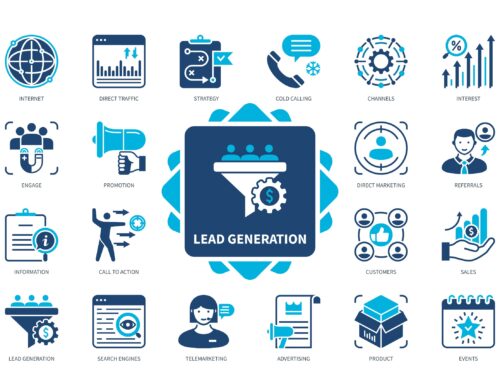In today’s digital age, a strong online presence is crucial. Yet, website marketing can feel overwhelming.
There are so many tools and strategies out there. Where do you even begin? This guide breaks it all down for you.
We’ll cover everything from SEO to social media marketing. Whether you’re a beginner or looking to refine your skills, this guide has something for everyone.
Let’s navigate the world of website marketing together, and turn your digital goals into reality.
Understanding Your Target Audience: The First Step in Website Marketing
Knowing your audience allows you to tailor your content and marketing efforts to meet their specific needs and preferences. Here are some steps to help you get started:
- Conduct Market Research: Utilize surveys, focus groups, and online research to gather data about your potential customers.
- Create Buyer Personas: Develop detailed profiles of your ideal customers based on demographics, interests, and behaviors.
- Analyze Competitors: Study your competitors to understand whom they are targeting and how you can differentiate your approach.
Understanding your audience not only helps in creating relevant content but also aids in optimizing your overall marketing strategy.
Optimizing Your Website for Search Engines (SEO): Key Strategies and Best Practices
Search Engine Optimization (SEO) is the backbone of any successful website marketing strategy. It involves optimizing your website to improve its visibility on search engines like Google. Here are some key strategies to get you started:
- Keyword Research: Identify relevant keywords that your target audience is likely to search for. Tools like Google Keyword Planner can be invaluable for this.
- On-Page SEO: Optimize individual pages on your website for your target keywords. This includes meta titles, descriptions, headers, and content.
- Technical SEO: Ensure your website is technically sound by improving site speed, mobile responsiveness, and navigating through Google’s guidelines.
- Backlink Building: Acquire high-quality backlinks from reputable websites to improve your site’s authority.
By focusing on these areas, you can enhance your website’s search engine ranking, driving more organic traffic to your site.
Utilizing Social Media and Email Marketing to Drive Traffic
Social media and email marketing are powerful tools for driving traffic to your website. Here’s how you can leverage them effectively:
- Social Media Marketing: Utilize platforms like Facebook, Instagram, and LinkedIn to promote your content, engage with your audience, and drive traffic back to your site. Share blog posts, updates, and special offers while engaging with comments and messages to build community trust.
- Email Marketing: Build an email list and send out regular newsletters, promotional offers, and updates. Email marketing allows for personalized communication, helping to nurture leads and convert them into customers.
Consistent and strategic use of these channels can significantly enhance your website traffic and customer engagement.
The Role of Content Marketing in Building Authority and Engagement
Content marketing involves creating valuable, relevant content to attract and engage your target audience. It’s not just about promoting your products or services but providing real value to your audience. Here are some tips:
- Blogging: Regularly publish informative and engaging blog posts related to your industry.
- Video Content: Create videos that educate, entertain, or inspire your audience.
- Infographics: Use infographics to present complex information in a visually appealing manner.
- Customer Testimonials: Share testimonials and case studies to build authenticity and trust.
High-quality content positions your business as an authority in your industry and fosters deeper connections with your audience.
Paid Advertising: Making the Most of Your Budget
While organic strategies are vital, paid advertising can provide an immediate boost to your website traffic. Here’s how to make the most of your advertising budget:
- Google Ads: Use Google Ads to target specific keywords and drive traffic to your website. This is particularly effective for competitive keywords.
- Social Media Ads: Platforms like Facebook and Instagram offer precise targeting options, allowing you to reach your ideal audience.
- Retargeting Ads: Retarget visitors who have already shown interest in your products or services but haven’t yet converted.
Effective paid advertising requires careful planning and constant monitoring, but it can yield significant returns on investment.
Measuring Success: Tools and Metrics for Tracking Your Website Marketing Efforts
To ensure your website marketing efforts are paying off, it’s essential to track and measure your success. Here are some tools and metrics to consider:
- Google Analytics: Track website traffic, user behavior, and conversions.
- SEO Tools: Tools like SEMrush and Ahrefs can help you monitor your keyword rankings and backlink profile.
- Social Media Analytics: Use the analytics tools provided by social media platforms to track engagement and reach.
Metrics to focus on include website traffic, bounce rate, conversion rate, and return on investment (ROI). Regularly analyzing these metrics will help you refine your strategy and achieve better results.
Conclusion
Marketing your website does not have to be overwhelming.
Start by understanding your target audience. Optimize your website for search engines. Use social media and email marketing to drive traffic. Create valuable content to build authority. Implement paid advertising for an immediate boost. Track and measure your success with the right tools.
Stay patient and consistent on your journey. Remember, small steps can lead to big results.
Ready to Elevate Your Website Marketing? Get a free quote and take the first step toward achieving your marketing goals!













